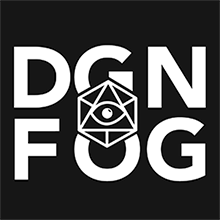Ursiya Tribal Shaman
Ursiya Tribal Shaman - Ursiya with Polar Bear Heritage, 6 levels of Fey-Touched Shaman 7
RARECGLARGEBESTIALPRIMALSHAMANURSIYAPOLAR BEAR
| Wearing strange bits of fabric, with bone, wood and stone totems and charms braided into parts of their fur, and spiritual markings and tattoos of deep blues, whites, greys and greens covering any revealed skin, you realize this must be the tribal spiritual leader. The reverence shown by the Ursiya around you as this individual, the only white furred one around, walks up to you slowly, sniffing deeply and lightly prodding you with its staff. The heavy smells of some sort of mineral salt wafts to you, as some sort of smoldering mineral is added to the nearby fire. You know not what to expect, as the shaman forcibly, but with a polite grunt, guides you to your knees and sits cross-legged across from you. | |
| Perception | 1d20+15 ( 1d20+17 if Scent applies) |
| Languages | Feriak, Valarian (Common), Sylvan |
| Skills | Acrobatics: 1d20+2 , Athletics: 1d20+13 , Diplomacy: 1d20+13 , Intimidate: 1d20+11 , Intuition: 1d20+13 , Medicine: 1d20+9 , Nature: 1d20+9 , Occultism: 1d20+11 , Spell-Stitching: 1d20+17 , Stealth: 1d20+12 , Survival: 1d20+13 |
STR +5 , DEX +2 , CON +4 , INT +1 , WIS +5 , CHA +3 | |
| Items | Staff of Ancestors- Grants the wielder, if they are Ursiya, the knowledge of their ancestors, granting them enhanced skill at Spell-Stitching and in the Occultism Skill. Also is a +1 striking quarterstaff. Has a 1/day special ability as well, Will of the Ancestors. During daily preparations, the shaman, if they are Ursiya, rolls a d20 and stores that roll. At any point they may exchange this stored roll with a d20 roll they have just made, though they must make this decision before they know the outcome of the roll they have just made. Stored Roll: 1d20 |
| AC | 22 |
| Saving Throws | Fort 1d20+14 , Ref 1d20+10 , Will 1d20+15 , Power Save (Strength): 1d20+13 , Logic Save (Intelligence): 1d20+9 , Ego Save (Charisma): 1d20+11 |
| HP | 83 1d12+5d8+48 - Resistances Resist (5) Cold damage |
| Speed | 35 feet, Swim speed 35 feet, Climb speed 20 feet |
| Melee | Bite: 1d20+13 to hit. 1d12+5 piercing damage Staff of the Ancestors (large size quarterstaff): 1d20+14 to hit. 1d12+6 bludgeoning damage. |
| Special Abilities | Aethyr Sight: You can see into the Aethyr, the realm of manna, which overlays our own, seeing all about you the flowing currents and thrumming rivers of manna of every which color. This allows you to see spell forms and tell whenever anyone is attempting to cast Arcane Magick. You can kind of filter this out and see like normal at will.
Hardy: When rolling for Maximum Health (like leveling up or if you choose to use this template but roll its maximum hp) if they roll a 1 or a 2 on any dice it counts as a 3 instead.
Scent: Within 100 feet if sense of smell can apply, +2 to Perception
Feral Stomach: They do not need to cook food, Ursiya live off raw food and in fact it is healthier for them to do so.
Stormborn Immunity: 50% chance its Lightning, 50% chance its thunder, decide when using this template.
Immoveable Force: Traditional Ursiya martial training leans heavily upon their physical superiority, and this is but one way they embrace that. An Ursiya whom takes this feat utilizes their bulk in a meaningful way. Any attempt to utilize combat maneuvors or abilities (but not spells, only physical contact effects) that would forcibly displace them in any way (trip, shove, drag, reposition, etc) are at -2. This increases to -4 at 12th level and -6 at 19th level.
Forager: While using Survival to Subsist, if you roll any result worse than a success, you get a success. On a success, you can provide subsistence living for yourself and four additional creatures, and on a critical success, you can take care of twice as many additional creatures. You can choose to support half the number of creatures with a comfortable living.
Aura Sight: You've learned how to read the natural auras of other living creatures. To do this, you must focus on a single living target without blinking for 1 minute. You can do this while performing some other minor task—such as making conversation to distract from your intentions—but you can't blink or otherwise lose your concentration. You can then perceive any or all of the following information.
The target's current apparent attitude toward you (friendly, indifferent, and so on).
The target's current apparent emotional state.
A general assessment of the target's physical health, such as what conditions or afflictions it has. You might need to succeed at an Occultism check against the affliction or condition's DC to detect the presence of a specifically hidden or subtle condition or affliction.
In addition, the GM rolls a secret Occultism check for you against the target's Deception DC. If your result exceeds your target's, you can identify if they're being deceptive in some way (such as expressing a false attitude toward you or faking an emotional state). This doesn't allow you to automatically identify the exact nature of that deception, only to tell the outward appearance is false.
Risky Surgery: Your surgery can bring a patient back from the brink of death, but might push them over the edge. When you Treat Wounds, you can deal 1d8 slashing damage to your patient just before applying the effects of Treat Wounds. If you do, you gain a +2 circumstance bonus to your Medicine check to Treat Wounds, and if you roll a success, you get a critical success instead.
Breath Control: You can breathe even in hazardous or sparse air. You can hold your breath for 25 times as long as usual before suffocating. You gain a +1 circumstance bonus to saving throws against inhaled threats, such as inhaled poisons, and if you roll a success on such a saving throw, you get a critical success instead.
Occult Magick: Unified Magicks Shamans have access to the spell-forms from this list and at the level depicted here would know 3 of them. Feel free to swap them around as needed, the three listed below are not gospel just three that might be most likely.
Instability (0/100): All Shamans are casting magick in ways that can only be described as unstable and must track an instability score that doesn't go away unless its discharged. This score is automatically discharged if they have to roll a miscast, the number added to the miscast roll. If it reaches 100 it automatically discharges the next time the shaman tries to cast magick and they must roll on the Major Miscast table. The amount of instability gained when casting is 1d6
Unstable Magick: Shamans are well aware of the risks of their magicks, specifically that they do not really have the training and talent to limit the manna flow when spell-weaving. As such over time the chaotic energies of unfiltered manna pools within them, altering the outcomes of their attempts to spell-cast over time. The dice represents how you keep score. A Shaman, after a Rest, is always at 0 Instability. Every time they roll the Spell-Stitch skill with the intent of manifesting a spell-form, including any of the feats that count themselves as spell-forms via their traits, and require a Spell-Stitch roll, they must roll their Unstable Magick dice and add that number to the Instability score. This number stays there until they Rest again, or until it is discharged. The Instability score increases the DC of any spell-form they are attempting to Spell-Stitch by that amount. Instability can be cleansed by discharging it. How this is done is by giving into the chaos, and declaring you are 'letting go.' Your next spell-form cannot fail to cast, you are only rolling to see if you critically succeed. However regardless of if you do critically succeed or not, you trigger a minor miscast, and when you roll on the minor miscast table, you add your instability to the 1d100 roll. Should you roll a Natural 1 on that Spell-Stitch roll, you actually roll on the Major Miscast table, but with no need to add anything, discharging your Instability. This removes all Instability from them. They are also subject to Manna Fatigue rules when it comes to their casting and if they fumble a cast. However they can  Absorb Chaos, a unique action that allows them to revitalize themselves from Manna Fatigue. Doing so involves rolling their Instability Dice a number of times equal to how many instances of this condition they are attempting to remove. If Instability ever reaches 100 you roll Major Miscast automatically next time you try and use magick/discharge your Instability.
Storm-Sprite Familiar: Provides elemental stability, allowing the Shaman to insure unified magicks deal cold, lightning or thunder damage, and they get to choose. They also 1/day can clear Dying (1) from the Shaman, shocking them back to consciousness and 1 hp without any Injured condition being gained. Familiars also serve another vital purpose. As a Absorb Chaos, a unique action that allows them to revitalize themselves from Manna Fatigue. Doing so involves rolling their Instability Dice a number of times equal to how many instances of this condition they are attempting to remove. If Instability ever reaches 100 you roll Major Miscast automatically next time you try and use magick/discharge your Instability.
Storm-Sprite Familiar: Provides elemental stability, allowing the Shaman to insure unified magicks deal cold, lightning or thunder damage, and they get to choose. They also 1/day can clear Dying (1) from the Shaman, shocking them back to consciousness and 1 hp without any Injured condition being gained. Familiars also serve another vital purpose. As a  if you would have to roll a Major Miscast, you may instead of allowing it to come to effect, fling all that unstable energy into your familiar. The ensuing magick burst deals 1d10 force damage/shaman level in a 20 foot radius and seems to destroy the familiar. However the apparent 'death' is greatly exaggerated and after 7 days during daily preparations the shaman's familiar will reform and return.
Shaman Profession DC: 25
Maddening Energy: So long as they have 1 Instability, the Shaman adds a roll of their Instability to Initiative whenever they must roll for initiative regardless which skill check is being used for initiative at that time. if you would have to roll a Major Miscast, you may instead of allowing it to come to effect, fling all that unstable energy into your familiar. The ensuing magick burst deals 1d10 force damage/shaman level in a 20 foot radius and seems to destroy the familiar. However the apparent 'death' is greatly exaggerated and after 7 days during daily preparations the shaman's familiar will reform and return.
Shaman Profession DC: 25
Maddening Energy: So long as they have 1 Instability, the Shaman adds a roll of their Instability to Initiative whenever they must roll for initiative regardless which skill check is being used for initiative at that time. |
| Spells | Spell DC: 25 Faerie Flames: Spell-Stitch DC: 20/25/30. Base Effect: The Fey-Touched Shaman can attempt to cover a 20 foot diameter area within 200 feet of them with dancing flames that do not harm anyone, but will limn anyone in the area, even revealing invisible entities. These flames provide anyone else attempting to target those individuals with Fortune on things like attack rolls. This can be maintained for 1 minute, it counts as a Concentration Spell. Targets in the area do get a simple pass or fail Reflex Save against the effect. Tier II additional effects: Radius becomes 30 feet. Tier III additional effects Radius becomes 40 feet. Faerie Flames: Spell-Stitch DC: 20/25/30. Base Effect: The Fey-Touched Shaman can attempt to cover a 20 foot diameter area within 200 feet of them with dancing flames that do not harm anyone, but will limn anyone in the area, even revealing invisible entities. These flames provide anyone else attempting to target those individuals with Fortune on things like attack rolls. This can be maintained for 1 minute, it counts as a Concentration Spell. Targets in the area do get a simple pass or fail Reflex Save against the effect. Tier II additional effects: Radius becomes 30 feet. Tier III additional effects Radius becomes 40 feet.
 Fey Step Pact Bond: By Discharging their Instability, triggering an automatic Minor Miscast as a result, when about to take damage in some way (from an attack or spell or effect), a Fey-Touched Shaman can step into the Aether briefly, insuring they come to no harm and repositioning where they reappear by a distance of up to their movement speed from their starting point. Fey Step Pact Bond: By Discharging their Instability, triggering an automatic Minor Miscast as a result, when about to take damage in some way (from an attack or spell or effect), a Fey-Touched Shaman can step into the Aether briefly, insuring they come to no harm and repositioning where they reappear by a distance of up to their movement speed from their starting point.
 Animal Hypnotism: Spell-Stitch DC: 19/24/29. Base Effects: The Fey-Touched Shaman can attempt to cast this on a creature within 100 feet that they can see, though that creature also must be able to see them. They trigger Unstable Magick an extra time with this spell, adding that roll to the DC for the target as well. The target must be a creature of the Animal, Animal Arcanium, Monstrosity or Saurus types with an Intelligence less than 4. The creature makes a Will Save. If critically failed, it falls entirely under you control for up to one minute, not getting to reattempt the save every round at the end of its turns unless it took damage that round. If it fails, it falls entirely under your control, but does just automatically reattempt the save at the end of its turn for every round. If it succeeds, the creature falls under your control for 1 round then brushes it off. If it critically succeeds, it is not at all affected and is immune to this effect for a full day. Tier II additional effects: You can target up to two creatures at once. Tier III additional effects: You can target up to 3 creatures at once. Animal Hypnotism: Spell-Stitch DC: 19/24/29. Base Effects: The Fey-Touched Shaman can attempt to cast this on a creature within 100 feet that they can see, though that creature also must be able to see them. They trigger Unstable Magick an extra time with this spell, adding that roll to the DC for the target as well. The target must be a creature of the Animal, Animal Arcanium, Monstrosity or Saurus types with an Intelligence less than 4. The creature makes a Will Save. If critically failed, it falls entirely under you control for up to one minute, not getting to reattempt the save every round at the end of its turns unless it took damage that round. If it fails, it falls entirely under your control, but does just automatically reattempt the save at the end of its turn for every round. If it succeeds, the creature falls under your control for 1 round then brushes it off. If it critically succeeds, it is not at all affected and is immune to this effect for a full day. Tier II additional effects: You can target up to two creatures at once. Tier III additional effects: You can target up to 3 creatures at once.
 Counter-Weave: Spell-Stitch DC: 15/20/25. Base Effects: Within 60 feet, the shaman can attempt to counter a spellcaster. If the spell they were weaving ends up equal to or lower tier than your Counter-Weave, you simply stop them and the actions they spent attempting to cast the spell are wasted. If they cast at a higher Tier than your counter-weave, you must roll a Logic Save against their Spell DC. If you critically fail you take 1d6 psychic damage and fail to counter-weave. If you merely fail, you take no damage but fail to counter their spell. Should you succeed you counter their spell, should you critically succeed you counter their spell and you inflict 1d6 lightning/cold/thunder (you choose) damage upon them. Tier II Effects: Damage numbers become 2d6 . Tier III Effects: Damage numbers become 3d6 Counter-Weave: Spell-Stitch DC: 15/20/25. Base Effects: Within 60 feet, the shaman can attempt to counter a spellcaster. If the spell they were weaving ends up equal to or lower tier than your Counter-Weave, you simply stop them and the actions they spent attempting to cast the spell are wasted. If they cast at a higher Tier than your counter-weave, you must roll a Logic Save against their Spell DC. If you critically fail you take 1d6 psychic damage and fail to counter-weave. If you merely fail, you take no damage but fail to counter their spell. Should you succeed you counter their spell, should you critically succeed you counter their spell and you inflict 1d6 lightning/cold/thunder (you choose) damage upon them. Tier II Effects: Damage numbers become 2d6 . Tier III Effects: Damage numbers become 3d6
 Elemental Wall: Spell-Stitch DC: 17/22/27. Base Effects: 500 feet range, targeting a line of up to 30 feet in length you can see. This is a Concentration spell, lasting up to 1 hour. You choose the element, Lightning, Thunder or Cold immediately. Cold is a wall of solid ice and is impassable, the other two act as walls of crackling and thumbing elemental force, traversable but violent. They are 10 feet thick and have a maximum height of 50 feet. The climb DC of the ice version would be your Spell DC. Those caught in it as you form it, or any creature attempting to move through it if you picked one that can be passed through take 2d6 of the appropriate elemental damage every 5 feet they travel. A creature caught in the cold wall as it forms takes this damage but is not trapped, is merely pushed to the nearest space outside the wall. Damage from traveling is not separate instances of damage for points of damage resistance they are applied after the movement ends, all at once.Tier II additional effects: Can be 60 feet long, 15 feet in height. Tier III additional effects: Can be up to 90 feet long, and damage becomes 3d6 per 5 feet traveled. Elemental Wall: Spell-Stitch DC: 17/22/27. Base Effects: 500 feet range, targeting a line of up to 30 feet in length you can see. This is a Concentration spell, lasting up to 1 hour. You choose the element, Lightning, Thunder or Cold immediately. Cold is a wall of solid ice and is impassable, the other two act as walls of crackling and thumbing elemental force, traversable but violent. They are 10 feet thick and have a maximum height of 50 feet. The climb DC of the ice version would be your Spell DC. Those caught in it as you form it, or any creature attempting to move through it if you picked one that can be passed through take 2d6 of the appropriate elemental damage every 5 feet they travel. A creature caught in the cold wall as it forms takes this damage but is not trapped, is merely pushed to the nearest space outside the wall. Damage from traveling is not separate instances of damage for points of damage resistance they are applied after the movement ends, all at once.Tier II additional effects: Can be 60 feet long, 15 feet in height. Tier III additional effects: Can be up to 90 feet long, and damage becomes 3d6 per 5 feet traveled.
 Elemental Spray: Spell-Stitch DC: 10/15/20 Base Effects: This is a 15 foot cone that extends from the shaman in a direction they choose. As they cast they must choose which element, cold/lightning/thunder damage they desire it to be. Any creature in the area must attempt a Reflex Save. If they fail they take 2d4 of the appropriate elemental damage, if they critically fail they take double damage and are afflicted with the appropriate condition;
- Slow (1) for Cold
- Deafened (1) For Thunder
- Blinded (1) for Lightning
If they succeed, they take half damage, if they critically succeed they take no damage. Tier II additional effects: Damage becomes 4d4 . Tier III additional effects: Damage becomes 6d4 Elemental Spray: Spell-Stitch DC: 10/15/20 Base Effects: This is a 15 foot cone that extends from the shaman in a direction they choose. As they cast they must choose which element, cold/lightning/thunder damage they desire it to be. Any creature in the area must attempt a Reflex Save. If they fail they take 2d4 of the appropriate elemental damage, if they critically fail they take double damage and are afflicted with the appropriate condition;
- Slow (1) for Cold
- Deafened (1) For Thunder
- Blinded (1) for Lightning
If they succeed, they take half damage, if they critically succeed they take no damage. Tier II additional effects: Damage becomes 4d4 . Tier III additional effects: Damage becomes 6d4 |





